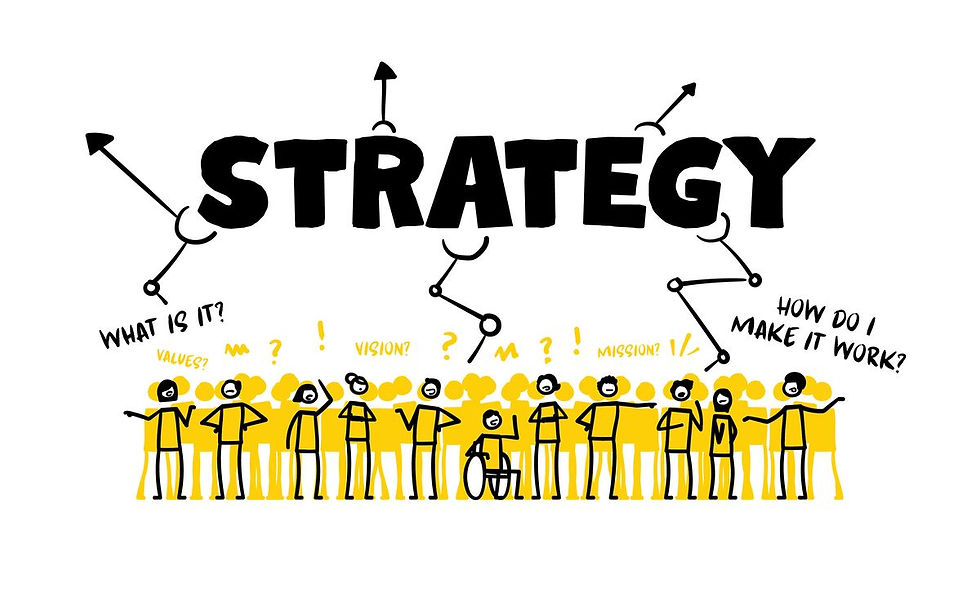Why the next decade of business growth depends on decoding Gen Z’s mindset
- Crsndo.
- Oct 25
- 3 min read
Gen Z, born between 1997 and 2012, represents the most connected and value-conscious generation in history. They are digital natives who merge personal identity, convenience, and authenticity into every purchase. By 2030, they are projected to make up more than a quarter of global consumer spending. For growth-focused businesses, understanding Gen Z is not a demographic exercise. It is a strategic necessity.
Gen Z’s buying behaviour is defined by digital fluency, financial caution, and a search for meaning.
According to McKinsey’s State of the Consumer 2025, Gen Z spends an average of 4.2 hours per day on mobile devices, with more than 70 percent of product discovery happening through social platforms. GWI’s Global Commerce Report 2024 found that 58 percent of Gen Z consumers worldwide purchase through social media at least once a month, compared to 41 percent of millennials.
However, they are not careless spenders. Deloitte’s Global Gen Z Survey 2024 reports that 54 percent of Gen Z consumers feel anxious about financial stability, and 37 percent prefer second-hand or circular-economy options when available. This generation blends aspiration with restraint.
Loyalty patterns are also shifting. According to SAP Emarsys, 46 percent of Gen Z shoppers have abandoned a brand they were once loyal to because it became boring, and 81 percent have switched brands in the past year due to poor digital experience or ethical inconsistency.
Simplified pattern: Gen Z spends digitally, chooses carefully, and stays only when brands align with their identity and values.
Three major forces explain why Gen Z behaves this way and what it means for business.
a. The social-first buying journey
Gen Z no longer distinguishes between social media and shopping. Platforms such as TikTok and Instagram act as both inspiration engines and marketplaces. A 2024 report by Adyen found that 54 percent of Gen Z consumers in the UK have used AI-powered shopping recommendations to make a purchase, compared to only 27 percent of Gen X.
For businesses, this redefines the website’s role. It must serve as a conversion system, not a static brochure. A well-structured site integrates seamlessly with social commerce, supports fast checkout, and delivers trust signals within seconds.
b. Value and ethics converge
Gen Z links personal identity to purchasing behaviour. According to NielsenIQ’s Sustainability Study 2025, 63 percent of Gen Z consumers consider environmental impact when choosing a brand, but only 36 percent are willing to pay a significant premium for sustainability. They expect ethical action as standard, not as a luxury.
This shifts brand strategy from storytelling to evidence. A credible brand demonstrates its values through measurable actions — transparent sourcing, visible inclusivity, and clear environmental reporting.
c. Emotional drivers shape loyalty
Gen Z’s relationship with brands is emotional, not transactional. Retail Brew’s 2024 study showed that 42 percent of Gen Z respondents made a purchase driven primarily by mood, while 55 percent said their favourite brands “make them feel understood.” Businesses that connect emotionally through design, tone, and shared values outperform those relying on discounts or promotions.
Three practical levers to align with Gen Z’s purchasing logic
Optimise the mobile-first funnel
Map the Gen Z buying journey from social discovery to checkout.
Ensure pages load in under three seconds and payment options include digital wallets and buy-now-pay-later flexibility.
Monitor drop-off points through analytics and heatmaps.
Anchor brand identity in lived values
Replace generic ESG claims with tangible proof. Show how your operations back your words.
Feature authentic user-generated content instead of polished ads.
Audit your Strategic Blueprint to ensure visual and verbal elements reflect credibility and cultural awareness.
Design loyalty as an experience
Introduce engagement-based loyalty mechanics: points for sharing, reviewing, or contributing to community content.
Refresh visual identity and campaigns quarterly to sustain novelty.
Align website analytics with retention metrics, not just acquisition.
According to the ONS SME Growth Index 2024, small businesses with integrated digital ecosystems grew 27 percent faster year-on-year than those with disconnected online channels.
What’s at Stake
Ignoring Gen Z’s mindset risks more than missed sales. It means building systems for a market that no longer exists.
Outdated digital experiences erode trust. If your checkout lags or your interface feels dated, Gen Z will exit instantly.
Inconsistent values lead to social backlash. Authenticity audits now determine whether brands sustain credibility online.
Static brand identities lose attention. Gen Z expects evolution, creativity, and community involvement.
According to PwC’s Global Retail Outlook 2025, brands that failed to modernise their digital experience lost an average of 19 percent in year-on-year conversion performance among Gen Z audiences.




Comments